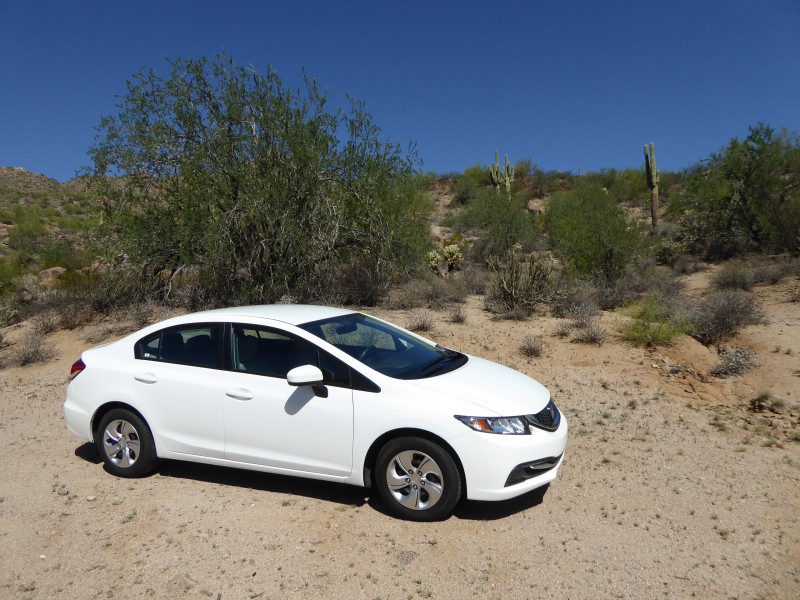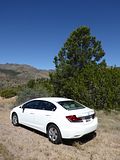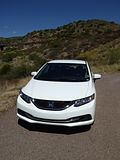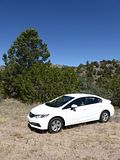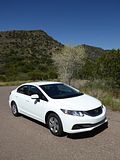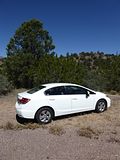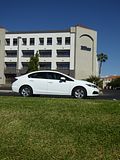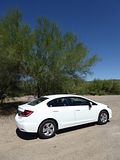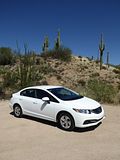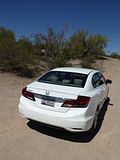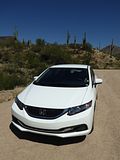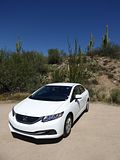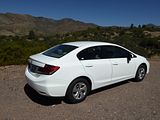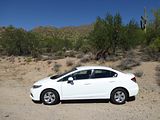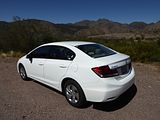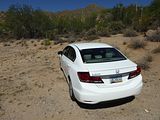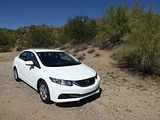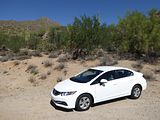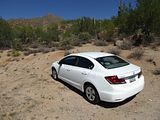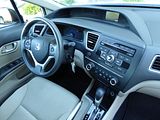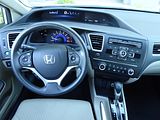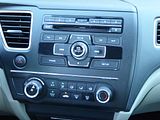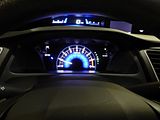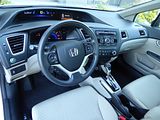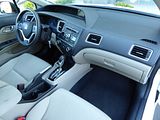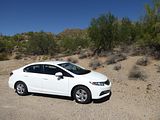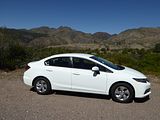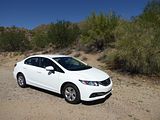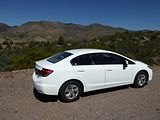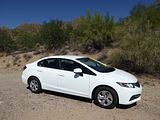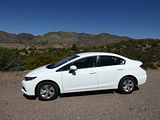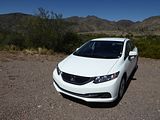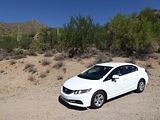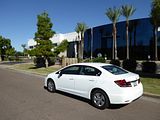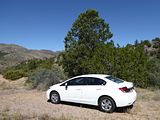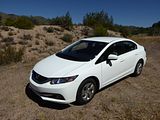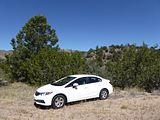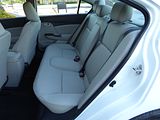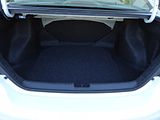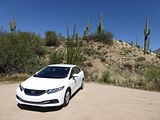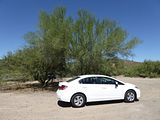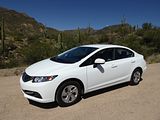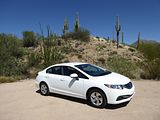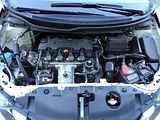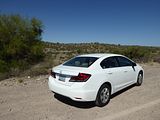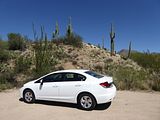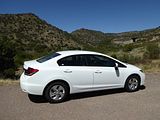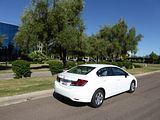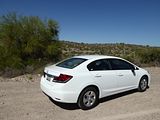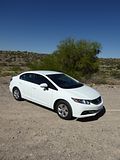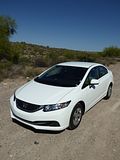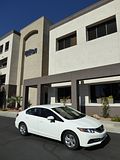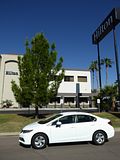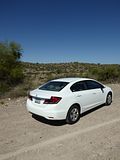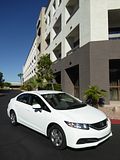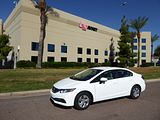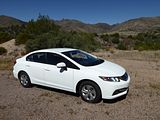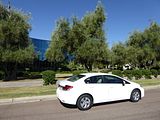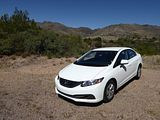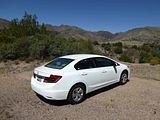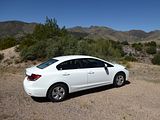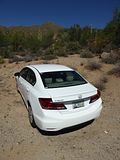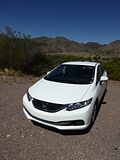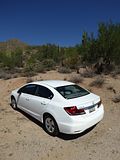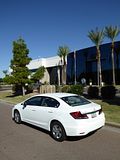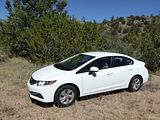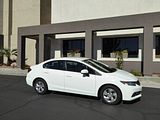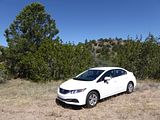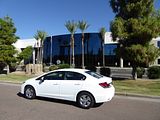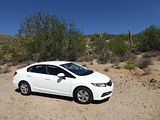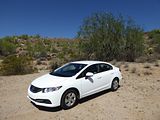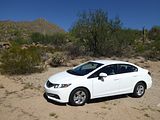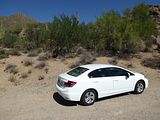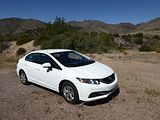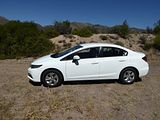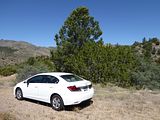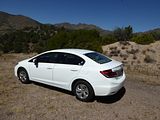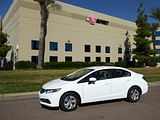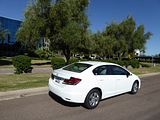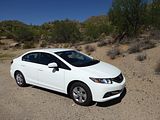
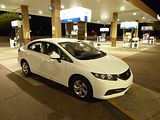

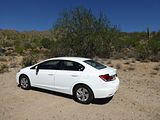

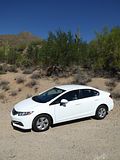
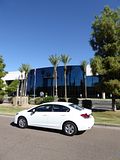


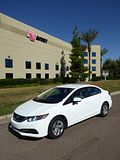
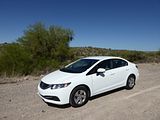

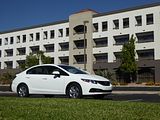
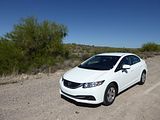
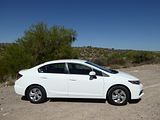
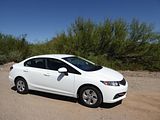
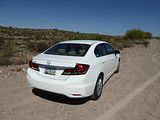

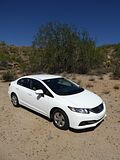
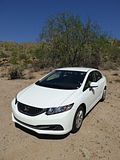
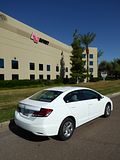




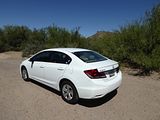
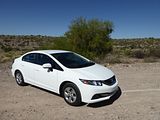
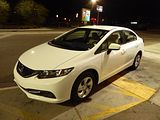
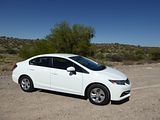
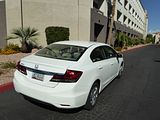
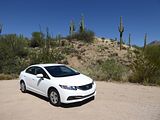
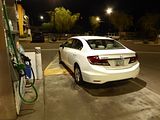
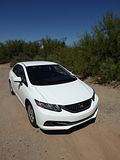
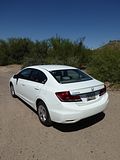

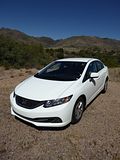

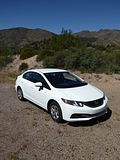
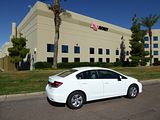
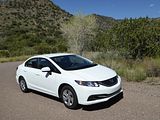
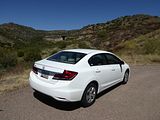
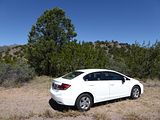
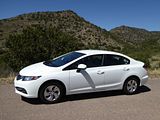
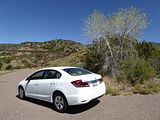
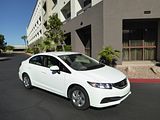

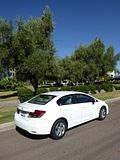
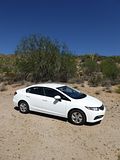

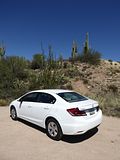
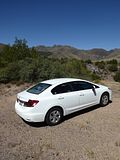
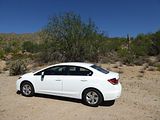
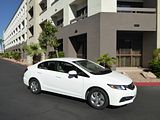

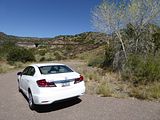
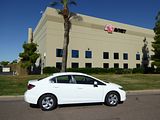
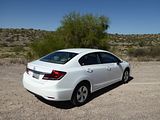
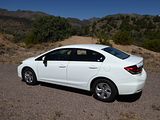
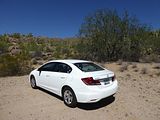
The perfect car has yet to be invented. And to be honest, it probably never will be, as what matters to you and me is not going to be exactly the same as all other buyers seek. In any case, a car, like all other products, is the result of a set of compromises, between what the engineers and stylists want, what marketing say is required and what the accountants say can be afforded. Mostly, the balance between the conflicting pressures of these different opinions results in something very acceptable, but occasionally, it all goes badly wrong. Honda did so, in spectacular fashion, when they produced the 9th generation of their small Civic for the US market. Until this point, the Civic had established a good reputation, with the car having particular appeal among young drivers. But when the press got behind the wheel of the new 2012 model, they could not contain their disappointment, with scathing review following damning criticism in every single assessment. The bland looks were the least of the problems, as this model had an almost offensively cheap and nasty feel to the interior with particularly sub-standard materials used, and unlike all previous Civic models, it was dull to drive with a poor handling and ride mix. It sunk to the bottom of the comparison tables, just desserts for a car that was signed off immediately post the 2008 Credit Crunch, where the accountants thought that they could get away with the cost-saving measures that they imposed on what had always been a very engineering-led company, in complete contrast to what had been going on at ,many of the Honda’s main rivals, such as Ford, Chevrolet, Mazda, Hyundai and Nissan, where a more upscale finish had been sanctioned in their latest products. Although, in a rather perverse way, sales actually went up compared to the previous year, it is to Honda’s credit that within weeks of their public castigation, they announced that they would rush through an emergency set of updates to be applied to the 2013 model year cars. And sure enough, they did. Premiered at the 2012 Los Angeles Auto Show, a mere 14 months after the first launch of the car, there were some obvious changes to the external detailing with a more complex bonnet pressing, larger mesh grille opening framed by a chrome-edge, new headlights and a reworked lower grille/bumper area with a fillet of brightwork at the front, and a redesigned boot lid with a better-integrated licence plate area and a chrome trim strip across the car connecting larger and more elaborate two-piece tail lamps were all intended to make the Civic look less dull from the outside. Inside there was a significant upgrade to the quality of the materials used, both on the dashboard, the door casings and the seat trims, and a lot of extra sound deadening material was intended to make the Civic a lot quieter. More significantly, thicker anti-roll bars front and rear, a quicker steering rack and retuned bushes in the suspension were all aimed at making the Civic better to drive.
Although there are very few Honda models in the US rental fleets, I did get to sample a 2012 Civic. I only had it for a day, which was quite long enough to see just why it had been so poorly received. I had also driven its predecessor, which I had rather liked, but this one really failed to hit the spot. My conclusion was that it was marginally better than the Corolla of the same era, only because there was at least feel to the steering in the Honda, which was completely missing in the Toyota, and that car also felt extremely tinny. But I noted that there was a long list of rivals, all of which were “better” than either of the biggest selling models in the class. Since that time, I’ve managed to drive most of them, with just the latest Mazda 3 (likely to be my pick) and the Kia Forte eluding me, so on the dawn of the launch of a new 10th generation Civic, it was well and truly time for a reassessment of the Civic, to see if those 2013 model year changes had made it a better car. Still hard to source at Hertz, on a Sunday when the parking area was full of cars ready for rental duty, I found three Civic models parked up. I picked the most photographically friendly coloured one, which was white, or rather “Taffeta White”, as Honda call it. It turned out to be a 2014 model, registered late in the year.
Opening the door, and looking inside for the first time, two things were evident. One was that the overall design of the dashboard, with its unusual bi-level digital instrument display, straddling the steering wheel, and central part of the dash angled towards the driver had not changed, but the overall choice of materials and textures had. That was the right way round. Although you may have found the dash design to be verging on the bizarre, there was nothing much wrong with it, whereas the 2012 had everything wrong with the unpleasant thin and hard plastics and strange textures that had been used. Whilst the latest model is still not going to trouble even the likes of the Chevrolet Cruze of VW Jetta, let alone the truly premium brand cars such as an Audi A3, it is at least now acceptable, and all the pieces and edges line up far better than they did before. The door casings now have a mix of still fairly hard plastics and some cloth inserts, and the main dash moulding has lost the odd texture which looked like improperly finished glassfibre matting in favour of something more “normal”, and there are fewer different colours used. Much as was the case with the previous 8th generation car, the dash itself is certainly different to what you will find in any other car. The instruments are split over two levels. They are all digital, and the display uses dark blue colouring, which works well both in daylight and the dark. The lower area, which you look at through the steering wheel, contains a large digital rev counter, and has an area to the left with a vast array of warning lights, many of which illuminate was you turn the ignition on and then go out again. The upper area, which you need to view over the top of the steering wheel contains a digital speedo, which is flanked by two sets of almost vertical lines which change from blue to green when you are driving “economically”. There is a horizontal bar chart to the left of it for fuel level, and a similarly sized display area to the right which shows current fuel consumption. It is an instantaneous calculation, so the bars shoot back and forth on the bar chart. This eliptical display continues towards the top of the central part of the dash, and the right hand portion of it houses what Honda calls their intelligent- Multi Information Display, or i-MID, a new feature for this generation of Civic, which shows various information displays from average fuel consumption to the selected audio station and the digital clock, as well as any vehicle information warnings, which range from a door being open, to the fuel filler cap not being tightened sufficiently on a 5″ touch sensitive colour display screen. You can cycle through the menus in here by using buttons on the right spoke of the steering wheel. It is all actually quite easy to use, and despite the unconventional positioning of the instruments, works far better both than you might imagine, and than Peugeot manage to achieve in their latest designs. The rest of the controls are more conventional. The central part of the dash is angled towards the driver and in the entry level trim of the test car contains a fairly basic AM/FM radio with CD slot, operated with an utterly conventional set of buttons and below this are a couple of rotary knobs and a rectangular block of buttons for the air conditioning. To the left of the wheel is a large green button marked “ECO”. This is a new feature for this generation car, and according to the handbook, it adjusts the engine, transmission, power steering cruise control and air con to help to improve economy. Twin column stalks operate lights and indicators from the left and wipers on the right. There are simple repeaters for the audio system on the left spoke of the steering wheel and for cruise control on the right, along with buttons to change the displayed data in the i-MID.
Reviewing my assessment of the 2012 car, I note that I was particularly unimpressed by the seat comfort. I certainly did not find the seat in this 2014 car to be similarly poor. Seat adjustment is all manual, as you would expect in a car of this class and price, with a stepped rake adjuster for backrest angle. The driver gets a height adjuster, whereas in LX trim, the passenger does not. The steering column had an up/down and in/out to it, so it was easy to get a good driving position, and on a particularly hot day, I appreciated the fact that the seats themselves were trimmed in a sort of velour type cloth which was not uncomfortable to sit on even after the car had been parked in the full sun for a while.
Before getting underway, I did my inspection of the rest of the static attributes of the Civic. Room in the back seemed decent enough for what is a relatively small car. With the seat set to suit my short legs, there is ample legroom, of course, but even with a front seat set well back, space is not too limited. Three adults would probably find it a bit of a squeeze, but they should not find their heads rubbing the roof unless they are very tall. There is a more or less completely flat floor, with no central tunnel for a middle seat occupant to straddle. There is no rear central armrest. There is no external release for the boot. Access is gained either by pulling the lever on the floor to the left of the driver’s seat, or from the key fob. It is a noticeably smaller than that in many competitors. It is deeper than that in the Corolla, but not very long from front to back. The amount of cargo space can be extended by dropping the asymmetrically split rear seat backrest forward, though the opening through the rear bulkhead is not that great. Under the floor there is a space saver, and you could tuck a few very small items around it. Inside the cabin, there is a good sized glovebox, and quite a useful tray in front of the gearlever, as well as door bins on all four doors and a small but deep cubby under the central armrest. There is a map pocket on the back of the passenger seat only. Once comfortable, it was time to find out if the mechanical changes had made the Civic any better on the road.
Although you can buy a Civic with a number of different fuel types, ranging from a Hybrid to one powered by Compressed Natural Gas, it is the regular petrol powered cars that are the volume sellers. And if we are talking volume, then it is not the rapid 205 bhp 2.4 litre Si model to focus on, but the 4 cylinder 1.8 litre unit which was carried over from the previous generation car. It is now quoted as generating 143 bhp, a slight increase on the 140 bhp of earlier models. What is new, though, is that for 2014, Honda replaced the 5 speed automatic with a CVT gearbox. I was not aware of this whilst driving the car, though it did not take long before I started to wonder, and convinced myself that I must be imagining things, as I was sure that CVTs were the preserve of Nissan and now Toyota in the LE and S model Corolla. It is, I guess, to the credit of this transmission that it just did the job, without it being obvious that this was a CVT. Unlike the Corolla, where the transmission could not work out suitable gear ratios on some of the longer and moderately steep climbs on Route 87, when I took this car on the same route, it had no such problems. There are three shift positions marked on the gearlever: D, S and L, so you can give the transmissions some clues if you want to hang onto a lower ratio, which I guess you might if you were doing a really steep descent and wanted more in the way of engine braking. Otherwise, with no manual mode, I just put the Civic into D, and let the electronics work out what to do in response to the movements of my right foot. It does work by having a defined set of “ratios” rather than the problem that you sometimes get of the gearing trying to catch up with the accelerator pedal., The end result is generally smooth, which is a major reason why Honda made the change in the first place, as I certainly found that the 5 speed auto in the 2012 model was not very good, often hanging onto ratios when it should have changed them. 143 bhp is about average for this class of car, and is sufficient in everyday motoring, though it is never going to result in a rapid car. That is what the Si model is for. Even so, the engine is smooth and generally quite refined, but to get any real zing out of it, you have to work it hard, and once you head over 4000 rpm, it does get quite noisy. Noise was one of the bugbears of the 2012 version, but the addition of plenty more sound deadening has helped matters greatly with this one. There was one stretch of road where tyre roar was really noticeable, but otherwise, the Civic is now decently quiet when cruising at a steady speed. Fuel economy was a strength of the 2012 car, and whilst I did not achieve quite the same levels with this one, it was still pretty good. The trip computer said 36.6 mpg (US) at the end of the day’s testing. Calculating based on the fuel I put in at the end of the rental, I came up with 35.2 mpg US, or 40.07 mpg Imperial, suggesting that the car went back with a few drops more Regular in it than when I collected it. Either way, these are good figures, closely comparable with the Corolla, another car known for its parsimony.
The steering wheel in LX trim is a plastic moulded item, but it is not unpleasant to hold. It was what happened at the other end that I was more interested in, as the changes to the steering rack for the 2012 model, including a more rigid mounting and a slower assistance ratio had made journalists complain that the 2012 Civic was duller to drive, with less evident precision and more body roll than before. Even then, there was some sensation in the steering system, and that is certainly true now thanks to the changes made for the 2013 models. It’s no Mazda or Focus to drive, but thankfully, nor is it like a Corolla. The steering never gets heavy, and it seemed quite consistently weighted as you turned the wheel. You can’t really go fast enough to get into much trouble on bendy roads (!), which is where you will find that this Honda corners neatly, ultimately manifesting understeer. There is not much body roll, and again whilst this will not trouble the Ford or Mazda, it has a safe predictability about it which will suit many of the customers down to the ground, even if you would expect that a Honda should be more entertaining than this. The suspension is intentionally quite soft in the non-Si models, and this benefits the ride, which seems quite pliant and well able to tackle the varied, albeit mostly smooth surfaces of the test mileage. The brakes seemed better than last time round, with a nice progressive feel to the pedal, an no trace of the mushy feel that I complained about with the 2012 car. A conventional pull-=up lever handbrake is fitted between the seats. Visibility is not a problem, with a good field of view from the door mirrors, and the relatively large glass area and stubby tail make the Civic easy to position and manoeuvre. Further help is provided by the rear-view camera, a standard feature even on the LX, which projects an image onto the i-MID display area.
The North American market Civic is available in two body styles, a four door Sedan as tested and a two door Coupe, one of few remaining such model types. Gone is the bare-bones DX, so the LX, as per my test car is the new entry point of the range. Sitting above it are the EX, EX-L and the sporting Si, as well as the CNG and Hybrid cars. Standard in the $18,390 LX is a 5 speed manual gearbox. The CVT costs an extra $800. The LX covers the basics, but it is not what you call a generously equipped car, so you do not get disc brakes at the back, and the 195/65 R15 wheels are covered by plastic trims. The spec does include remote central locking, cruise control, air conditioning, a 4 speaker AM/FM auto unit with CD slot, MP3, Bluetooth, USB and AUX ports and wheel mounted controls, the i-MID info colour display system and a rear-view camera. Next up is the EX trim, which starts at $21,090. This brings you 16″ alloy wheels, rear disc brakes, automated climate control, variable intermittent wipers, an upgraded 6 speaker audio system, push button starting, Honda Lane Watch, a rear central armrest, an electrically operated sun roof, standard automatic transmission and the option of satellite navigation. Above this is the $22,740 EX-L which has 17″ chrome finished alloy wheels, front fog lights, a leather wrapped steering wheel, and leather seats, heated door mirrors and a power adjustable heated driver’s seat but the satellite radio is still an option. Top spec Si cars have the more potent 205 bhp engine, and only come with a 6 speed manual gearbox. They are trimmed somewhere between an EX and an EX-L, but do have a rear spoiler, front fog lights and a premium sound system in the spec. The Natural Gas version appears to be trimmed to the same spec as an EX, and there is also an economy special HF, which has lower resistance tyres, and is fitted out like an LX.
Without question this is a much better car than the 2012 model and is closer to the version that Honda should have released all along. At a price premium on release of just $160 over the old 2012 model, this has to be the best $160 upgrade ever. It does make one wonder just how deluded the bean counters were at Honda to think that they could get away with the 2012 models, but to their credit, they reacted quickly when it became apparent that they could not, without enduring endless damaging publicity. So to the extent that all the really irksome points that I highlighted in my review of that 2012 car have been addressed, that leaves you with a car which is now perfectly acceptable. For those who simply want a small family car that will get them from A to B, reliably, for many years, the Civic has much to commend it. Indeed, I would venture that if that is all you are looking for, you are probably better off with a Civic than its arch nemesis, the Corolla. Such customer prospects should certainly try both, as there is slightly more room in the Corolla and the more conventional dash may be more to some people’s tastes, though against this, the Honda is that bit more agile, has a much better CVT gearbox and better steering. However, I honestly think that both of these cars should be pretty well at the bottom of the comparison charts, along with the rather disappointing Nissan Sentra (though I gather its biggest bugbear of noise was addressed for 2014). You can do better with any of the rivals. Style-led buyers may like the swoopy lines of the Elantra, which also drove quite well, and Chevrolet’s Cruze is a well finished car with no significant weaknesses. The Focus is generally very good, though in my experience, the automatic gearboxes ruin the car, but a facelifted version may have changed all that, along with a better quality and simplified interior and the Ecoboost engines. It was the Kia Forte that won the Group Tests when it debuted in late 2013, but which I have yet to try, and then there is the Mazda 3, which would seem to have it all: best looking car in the (US) class, and sporty to drive. The first few have finally appeared in the Hertz fleet, nearly two years after launch, and that is the car I now need to hunt out to see if my hypothesis that it is the class leader is correct. With a tenth generation Civic waiting in the wings, Honda will hoping that I am wrong. It will be interesting to see whether they have really learned their lesson and the ninth generation will be a one-off aberration or not.

